
Foggy Bottoms Boys
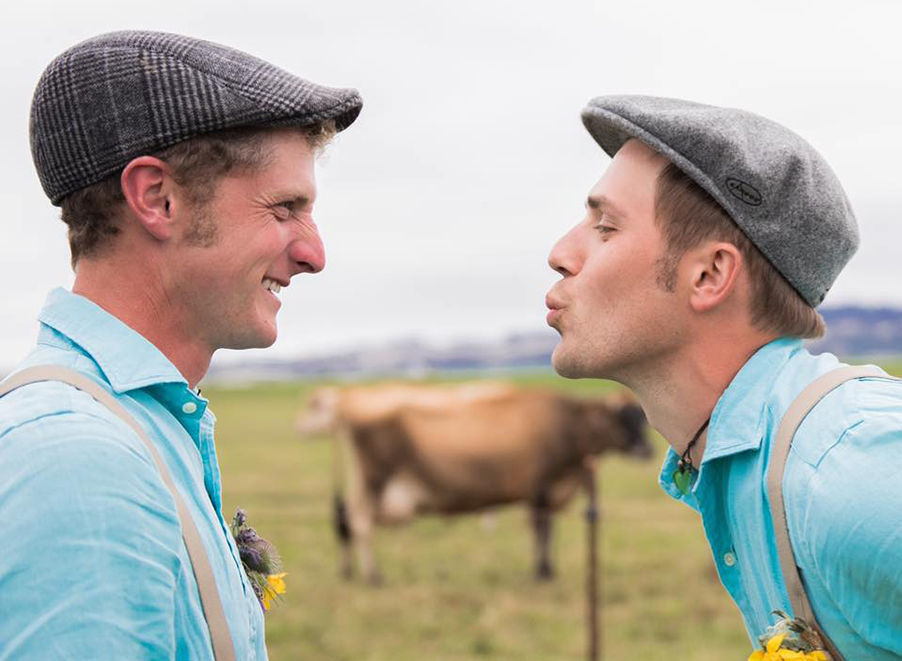
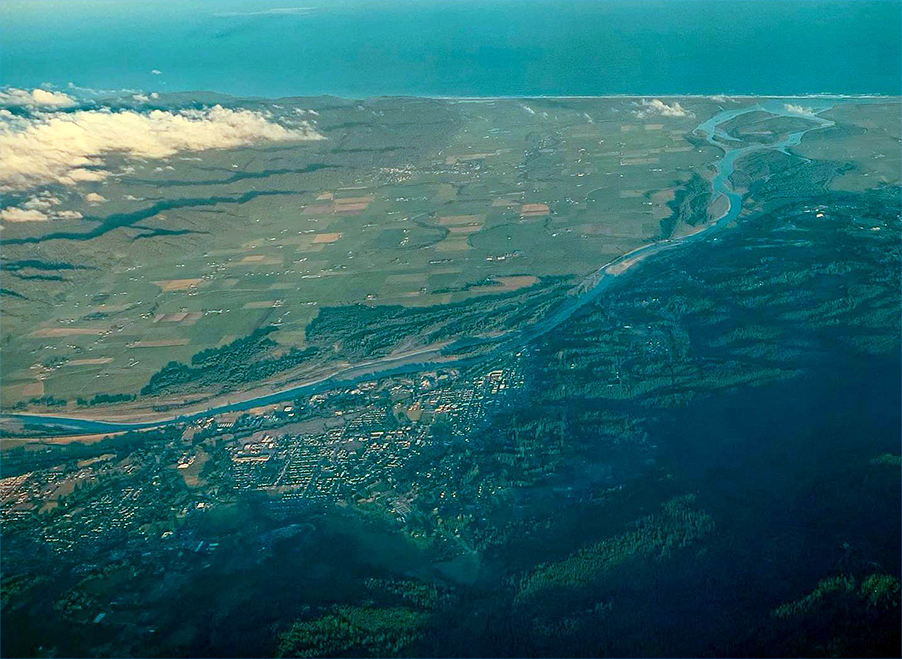
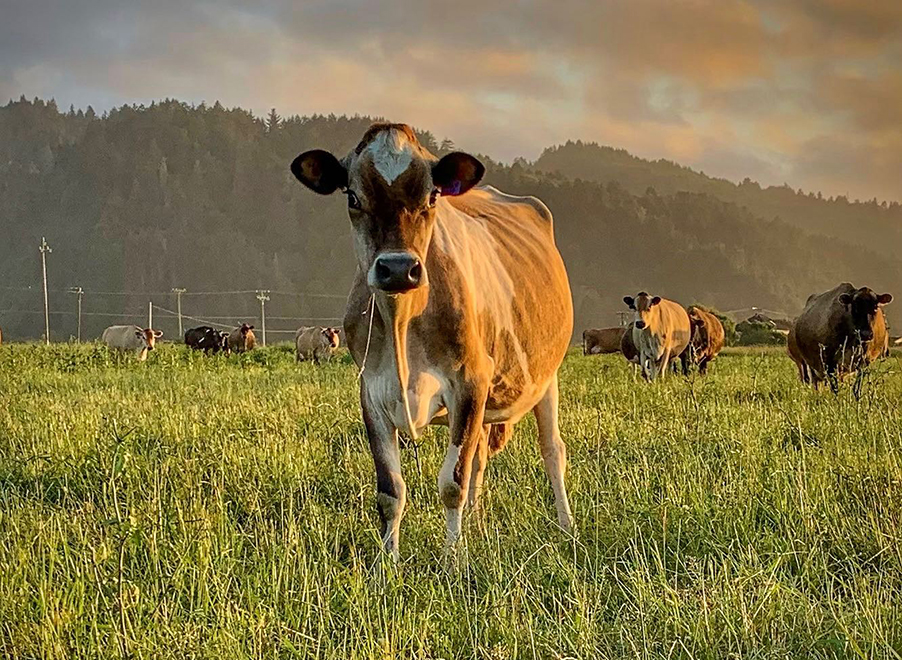
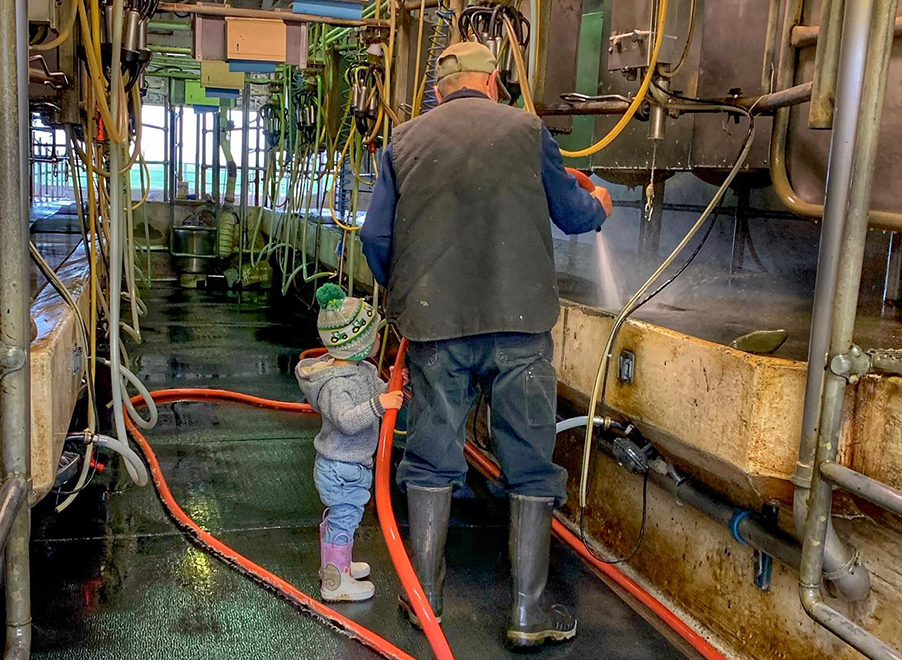
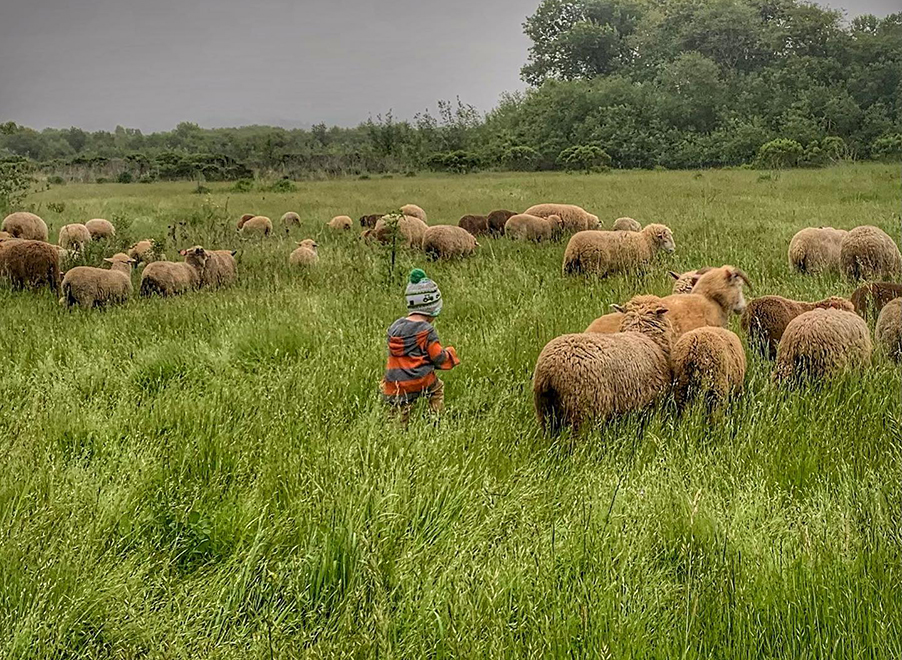

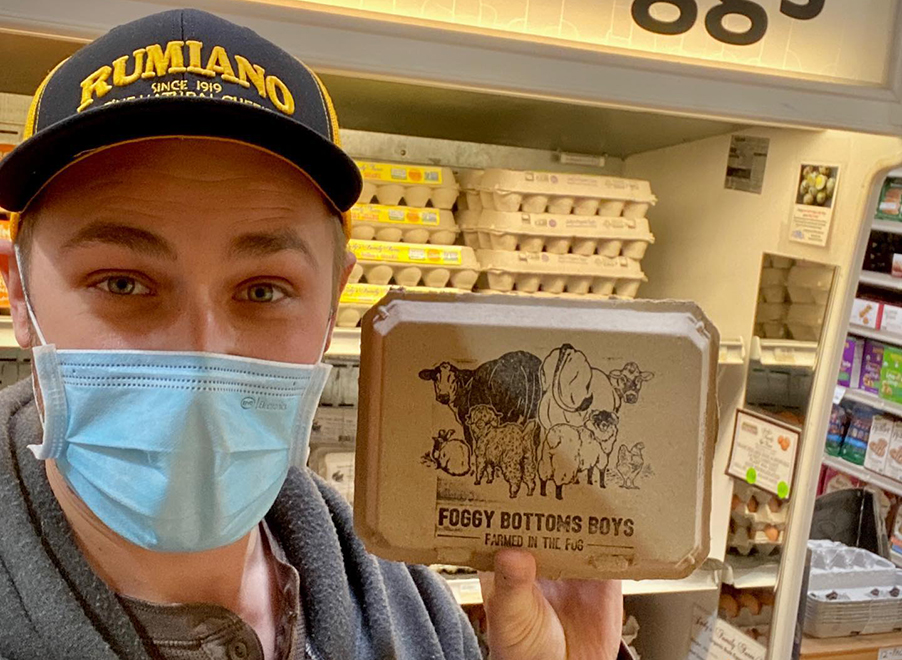

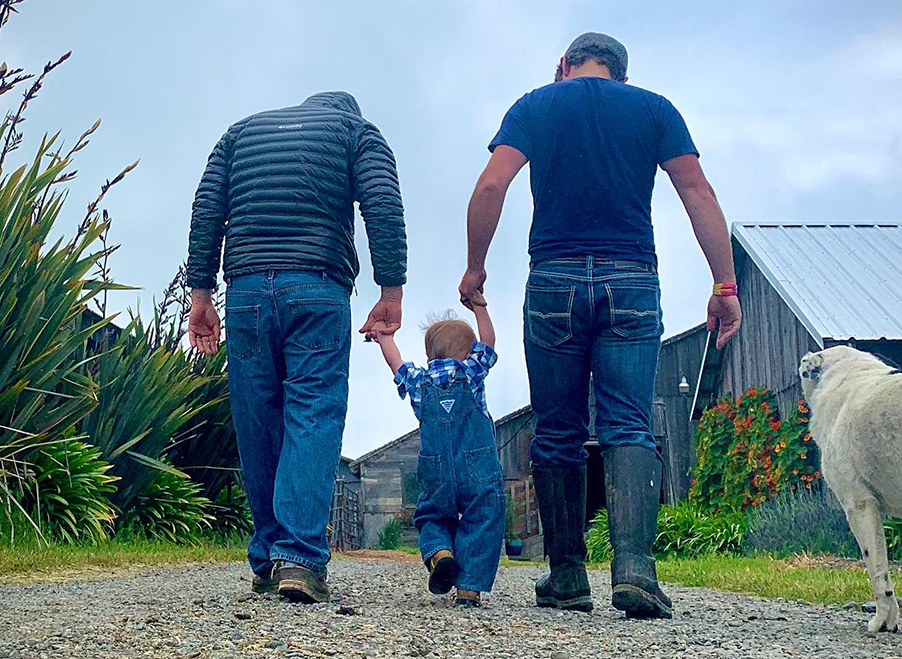
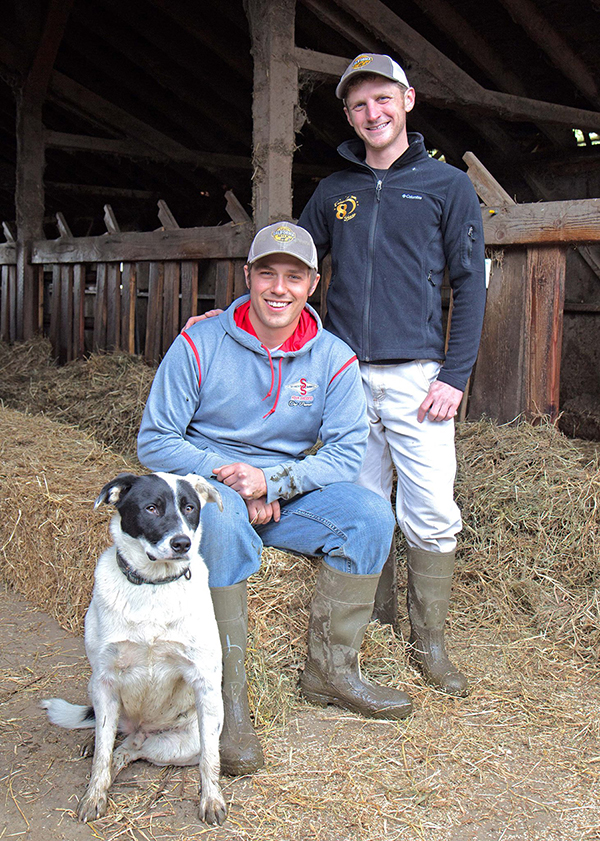 Foggy Bottoms Boys(opens in new window) is a 6th generation family farm that has operated in the foggy bottoms of the Eel River Valley in Ferndale, on the north coast of California, since the 1860’s. It received that nickname from other local farmers because it is currently run by Thomas and Cody Nicholson Stratton (often with their two year old son “The Little Farmer” close by) along with Cody’s father and grandfather—four generations working side by side.
Foggy Bottoms Boys(opens in new window) is a 6th generation family farm that has operated in the foggy bottoms of the Eel River Valley in Ferndale, on the north coast of California, since the 1860’s. It received that nickname from other local farmers because it is currently run by Thomas and Cody Nicholson Stratton (often with their two year old son “The Little Farmer” close by) along with Cody’s father and grandfather—four generations working side by side.
The operation consists of multiple parcels of owned and leased land. It started with 100 acres on a nearby island in the mouth of the Eel River where Cody’s paternal grandmother's family first immigrated with her family in 1860. In 1925 his grandfather and his family started the dairy on the mainland but they had been farming a generation previously on different properties. As Cody’s father, Cody, and Thomas expanded into a more diversified operation they bought the dairy, added 60 acres for grazing dairy and beef heifers, lease the island property from family and lease 160 acres of hillside for their sheep and another 120 acres for cattle. The farm produces beef, lamb and poultry for meat, eggs, and products such as yarn made from the wool from their sheep, goats and angora rabbits. The dairy’s milk, which has been certified organic since 2006, is shipped to Rumiano Cheese Factory(opens in new window) in Crescent City, CA where it is made into organic and grass-fed cheese, butter, and ghee.
Having grown up in farming, Cody always knew he wanted to be involved in agriculture but did not expect to come back to the family farm. He went to Oregon State and majored in Rangeland Ecology and Soils and then worked for a commercial direct-to-market garden and later managed the poultry division of a large multinational company. After three years there, he came back home to consider what he wanted to do next and his grandfather asked if he was interested in buying the farm so he could retire. So that’s what he and his parents did. Thomas, however, had no plans to do significant farming although his family did farm in previous generations and he always raised chickens and sheep at a small scale. He says, “I always knew I would be involved with animals in some form but didn’t know it would be at this level. I didn’t know that this is what my passion was going to be!” He went to school for Marketing and Consumer Behavior Sciences, which does come in handy for marketing their brand. However, he also has a passion for local food systems. Both that and a commitment to diversified farming are the driving forces behind much of what the two of them do.
Regenerative Practices
Cody emphasizes that a lot of the practices on the farm that are now called “regenerative” were used from the beginning. “We did what is called mob grazing since I was five! And I’m now 34. So we’ve been using those grazing systems for quite a while. We never applied chemical fertilizers. We do soil testing and really only use added manure from our dry cow barn and that is used to cover only about maybe 5-8 acres a year. Soil testing shows we have really healthy soils so we’re not needing to add anything in. We do apply the slurry from our milk barn.”
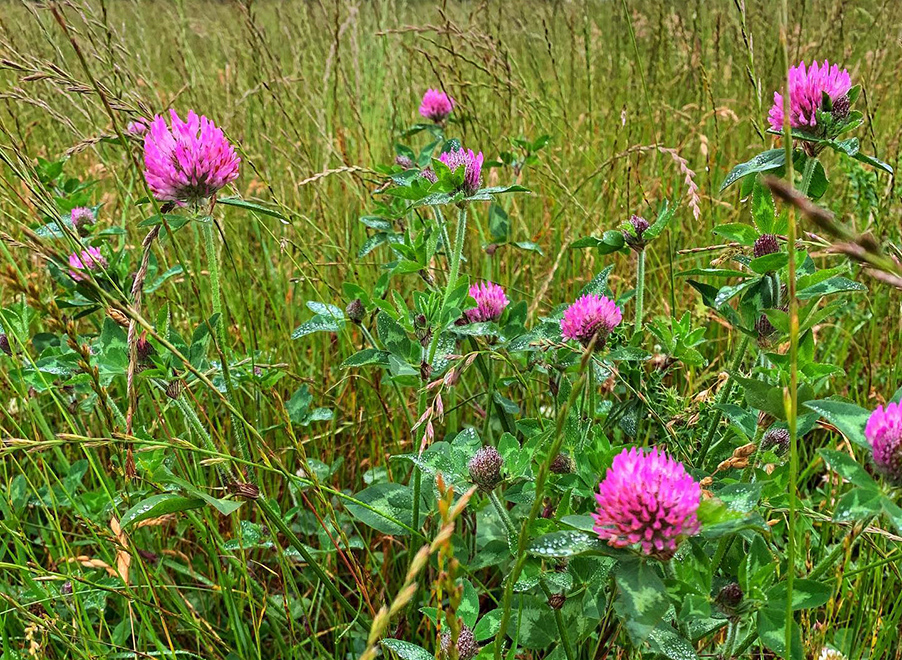
They also grow cover crops and maintain wild habitat for biodiversity. On the island property they grow alfalfa for their dairy cattle and sheep. They use an oat cover crop when that is established and usually add a rye along with the alfalfa and the native plants that are already there. There is also a wildlife corridor on the island that divides their field from other ones. They graze their sheep on the alfalfa stubble and use them to trim back the willows and other vegetation in the corridor. They also set aside corners of their fields on the mainland for use as native pollinator and wildlife areas.
Cody talked about new practices added this year and those planned for the next. “We’re going to try no-till drilling for the first time. We’re hiring a neighbor to do that. He’s going to apply oats and peas and rye grass into an already established perennial pasture to try some early spring cover cropping and to find out how things go with more rye grass in that field. In the dairy we broadcast seed to try to increase forage in a certain pasture or in a problem area and use the animals to really set that seed. Instead of farming, we’ll broadcast it and then we’ll feed hay or silage over the top of that area and just use the animal power to put the seeds into the ground. We aim to increase our organic matter. As long as we can feed hay or silage on the field rather than feeding the cows in the bunk, we’ll do it so the animals feed the soil microbes.” They find it far more efficient than keeping the animals in the barn more than necessary and having to haul the manure out.
Thomas talked a bit about not using a lot of inputs on the farm. “We feed a little bit of grain to the cows when we’re milking them to keep them happy when they’re getting milked—something for them to look forward to—but we’re basically a grass-based, grass-fed operation. The only inputs we provide is that little bit of grain and otherwise we make all of our feed. We grow it. One way that Cody’s dad approached my learning process, being a grass-based dairy, is that we’re not so much dairy farmers as we are grass farmers. Our one true goal is to actually grow the best grasses that we possibly can so that we can go into the next cycle of our business which is producing a high quality safe milk for cheese.”
The Foggy Bottoms Boys are not currently soil testing for carbon sequestration but hope to add that soon, perhaps this year, with the help of Fibershed(opens in new window), an organization involved in research and support for climate beneficial fibers. Cody explains, “We have been seeing visible evidence such as plant growth and indicators that would normally go along with there being good carbon in the soil but actually having the data is something that we really want. Joining Fibershed is our first step in that direction. We’re working with them on a grant and some climate beneficial wool—we’re just starting the relationship.”
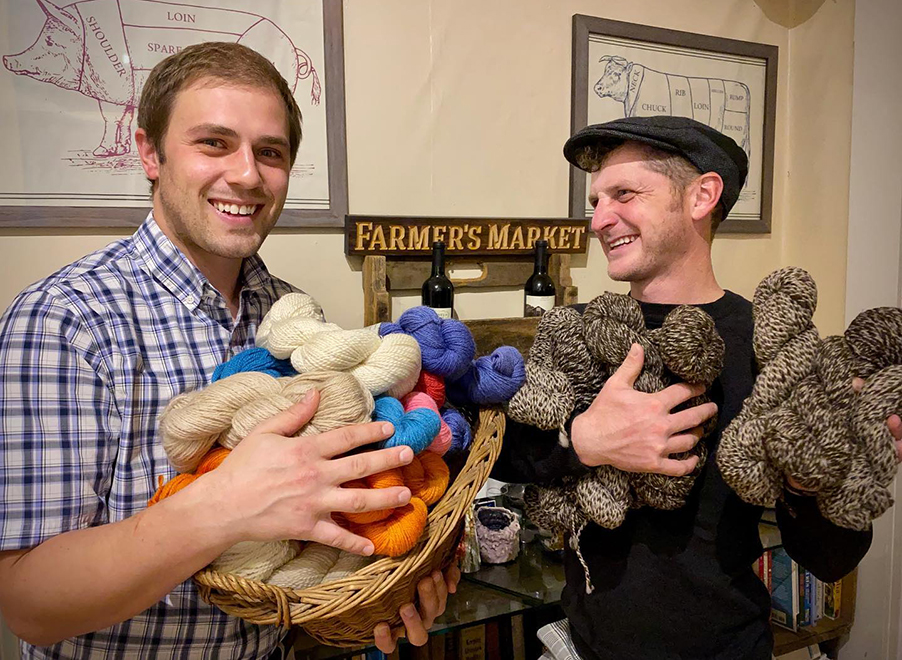
Equipment Needed to Farm Regeneratively
Foggy Bottoms Boys did not need to invest in much to implement regenerative techniques. Their neighbor has a no-till drill and they are paying him to do that for them. Cody suggests a good electrical fence charger. “We really tried to go with small Gallagher boxes quite a while ago with the sheep, and it is worth spending the $2000 on the largest size fence charger that will really electrify the fence and keep your sheep in. That and electronet were the only expenses we made.”
Thomas points out the importance of planning adequately for fixed costs no matter what kind of farming you do. “There are certain things I would say that regardless of what practice you do— conventional, organic, regenerative— there are always those fixed costs. And often time they come with the realization that it’s regulation driving it. Regulation comes from safety standards, food safety, and when you’re working with foods those standards are very important for scientific reasons. When it comes to chickens and you look at other systems around the world, for egg handling: instead of having their eggs washed in Europe, they vaccinate for some of the bacteria or diseases that are zoonotic, that can transfer to humans. So rather than worry about washing eggs, they actually have a higher cleanliness standard and vaccinate. And here in America, we are required to remove the natural bloom that is on the outside of the egg, that pivotally protects the egg from any outside contaminants. From the standpoint of whether that is a great thing or not a great thing, however you see it, that’s just a reality. So our biggest one-time investment right now on our chicken operation is buying an egg-washer. That allows for less time doing it by hand, makes it a lot easier. As long as you don’t get air bubbles in your water line, you have instant hot water. I’ve blown three hot water heating elements. They’re a pain in the butt to change, not so expensive but again, it’s those realities. That’s just how it is! Unless you figure out ways to co-exist with those regulations, through exemptions or other ways to participate without fully investing, you still will have a large amount of fixed costs when you’re scaling.”
The Benefits of Diversified Farming
Diversified farms used to be the norm but most modern conventional farms tend to be monoculture-oriented because that was believed to be a more efficient way of farming. Foggy Bottoms Boys, however, places a premium on diversity.
Cody: “It’s about resiliency. Diverse systems are more resilient. You have the ability to benefit from multiple markets and if something isn’t going well one year, we have the benefit of something else filling in.”
Thomas: “Diversity is absolutely that. The structure of nature and the environment is one built off of diversity. When emulating that, it is an important thing to realize that you can’t necessarily always account for all the ways that you’ll benefit right away. Diversity provides benefits more than any detrimental value where you have to chase some symptom down.”
Cody gives these examples: “If we’re trying to use animal impact and their natural behaviors, and you put multiple species on the farm, there is a lot that we can do. There may be something that a cow may not eat—cows aren’t interested in boxweed or young thistle—but the sheep are! And so we can utilize different animals in different areas. Or we can really impact an area using chickens and the next year that area has a more diverse plant community.”
The Impact of Climate Change
73% of California has been in drought(opens in new window) in recent years and Cody says that has been causing the greatest impact on the farm. “The dairy is irrigated but we attempt to use as little irrigation as possible. We’re having a struggle keeping up with irrigation this year. We didn’t get those late fall and spring rains that we usually get or the summer ones. The island is sub-irrigated from the river, and it has very sandy soils. Alfalfa puts down fairly deep roots so there is no irrigation there. But this year the water level was really low so we had about a 50% crop failure on the 2nd cutting of alfalfa and essentially 100% on the 3rd cutting. There was some alfalfa but it really wasn’t worth the work of going out to the island and harvesting it. So we mowed it off and just left it on the field as a mulch. We’re been giving it time to break down and we’re going to take the sheep out there this week and run them over it. They’ll clean up some of the stubble and the margins of the field, and with their hoof action they’ll help bring that top back down into the soil so it starts to break down and feeds the microbes.”
“We also saw impact with cattle because that area is not irrigated either. So we really stepped up our rotational grazing because we had to. We already put a lot of work into how we were going to move those cows around and maximize the weathered areas, grazing them off early and hoping new growth would come back later. The drought has really added to it.”
“The fires have also been a problem with our sheep.” They traditionally breed in November for a summer lambing season. “Last year we had a really poor conception period and a really low fertility rate. There were a lot of singles, not twins or triplets. It was, I think, because we were trying to breed ewes during fire season. It was smokey and dark. We had a day when the sun never came out! It was just dark all day. And that’s really a hard time to be breeding sheep and dealing with respiratory illness in sheep because of all the smoke and the ash falling. So we instead changed our lambing to a fall one. We bred in the spring because we weren’t fighting the challenges of fire.”
“And we’ve had to do some management with our grass. Most of our property is pretty wet so we’re not concerned about fire but the 160 acres up on the hill could have been a concern. So we had to try to manage for fuel load reduction up there.”
Other Challenges or Problems that Needed to Be Solved
Thomas: “I am one of those problems! (laughing) It’s literally understanding that you have to do things different and that stepping out of what is the norm when people may get, max, 40 years, 40 seasons out of the ability to be able to farm—that’s not that many times to screw up! And everybody sees it that way from the outside and from the inside. The challenge is how to meet in the middle to challenge one another and also to see that there is benefit to changing things at the same time as honoring and realizing what is tried and true.”
Cody: “One of the challenges we have found is time. There are definitely time constraints. I do a lot of regenerative podcasts and talk about doing 6 hour rotations on the cows which is shorter than we did before [because of the drought]. So we’ve done 6 hours now on a few fields. But it requires time to go out and move a fence. It’s just not always practical with everything else that might be going on throughout the day to have that always be an option. I think one of things that we have to remember is that we’re all human, there are only so many things that we can actually do in a day. We’re going to do the best we can and making an effort is better than not making the effort. So starting someplace and going from there, at least we’re taking that step.”
One thing that they tried and had a lot of trouble with was their pastured laying hens and predation.
Thomas: “When I was growing up and having chickens since age eight, you could pretty well confine 10 or 15 birds easily with open space during the day and cooping up at night. But even in a rural or earth suburb in an urban area there is always predation. So interacting or engaging with the natural environment is always something that has to be a balance. The largest challenge that we have had with the pastured laying hens is being able to provide the feed for them and the space for them while keeping them safe. Having large vast stretches of closed in wire netting or poly wire is really challenging to put up and take down. It allows more space for them to have, but when it comes to daily or bi-daily rotations, instead of just moving the tractor you have to move everything if you have just one string of net versus three or four. So it’s about finding that balance because as soon as you make two stretches of that wire, the less hot the hot box becomes. So the predators are not as susceptible. That shock isn’t so bad, so they think ‘I can manage that and go get my chicken meal.’ So it takes fine tuning. Do I put another net up or do I go out every day and move the coop? Should I just move the coop and keep it in a smaller area? Will I just have to do it twice a day or what have you? It comes down to time and the ability to have that resource.”
“The coolest part for where we are right now is realizing that there are resources that are available that we just don’t think about. In our case, what we’re doing is just letting go of some boundaries. We’re actually working with some of our neighbors to raise our chickens. We learned the benefits that we get from having the manure spread from the chickens and having the bugs and the larvae from the flies eaten. That was huge for us! Especially the time when we had something called ‘army worms.’ There were army worms that came out and were eating all of the fresh green shoots in grasses across the entire valley. And there were so many folks that were having such huge challenges with pastures. But we had the chickens! And we rotated them around to the parts of the property where the problem was the worst to combat those problems with great success. So realizing that even though that’s the reason we have the chickens and that was a catastrophe we were able to avert and not have such challenges as everyone else in our neighborhood, we can still work together as farmers. So now our neighbors are currently getting the benefit and he’ll be raising the birds, but they’ll come back to our land here at some point when we feel like we need to have fly larvae removal or there’s an army worm invasion again.”
Cody: “And it’s a good way for us to support other farms to come into a more regenerative space without having to do their own marketing. Not everyone is interested in doing marketing and building their own brand but we’ve been able to build a brand and fulfill recognition for it. And we’re able to process eggs and we enjoy that part of it. So they’re able to produce the eggs for us and we help to support them. It lightens the load for us but the birds are still right next door. We know what’s happening with the chickens, we know what they’re eating, and he’s able to devote more time to them.”
The Importance of Community and Identity
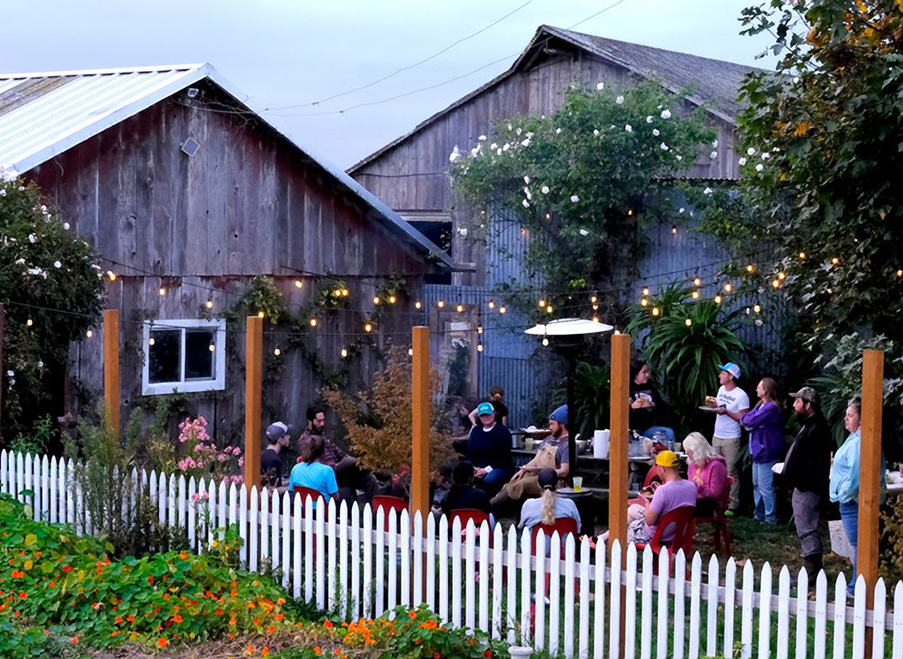
Cody and Thomas say it feels great to have that sense of community with neighboring farmers. It has also been important to develop a relationship with the local community as a whole, since local food systems are a motivating value for them. While they do ship some boxes of meat to people who like to support what they do, their goal is to focus on the local food system.
Thomas: “Recognizing that when it comes to natural disasters, and I say ‘when’—it’s only a matter of time before when you will experience a natural disaster, from tsunamis to hurricanes to drought to tornadoes, worldwide there is always something—to even be able to support a larger food system and infrastructure outside of our own requires the ability to have a sustainable and sovereign food system locally.”
“That’s really been my charge, my passion and my drumbeat. And it’s hard even trying to do it because it’s so nebulous. Folks don’t really understand that advocation. So sometimes the best advocation is the advocation of doing it and making it work for you as the farmer to ensure that your local community has what’s necessary when there is a challenge.”
Cody also talked about community in terms of their identity as a family farm and attempting to share that experience with others. “It’s hard because when you’re a family farm there are multiple different personalities and different ideas about how things should be. Those are all the challenges that come with being a family farm. But one of the benefits that we’ve seen is that small farms are a great way to connect people to food and to agriculture and that’s something that’s missing today. One thing we’ve created [to address that] is our Barnyard Experience(opens in new window) which gives us an opportunity to have people have dinner with us, tour the farm, we cook dinner together so they learn how to cook a tomahawk steak, and then enjoy a couple of hours in the evening seeing the farm, seeing where our food comes from and also talking about agriculture and regenerative agriculture and the power of the carbon cycle, why there are different farming practices and what they are.”
Thomas adds in, “I’m not coming from a family that was currently operating commercial scale agriculture, but having it just in the previous generation, provided those story-telling moments I was able to at least connect with and know the true struggles when it comes to the reality of farming and food systems. Because it was something that was not necessarily a choice for farmers to stay in farming. They literally had to get different jobs because of the USDA’s stance on what should or should not be done. It was go big or get out! And the realities of that is a disconnected, disjointed culture about what agriculture should look like, and how people view agriculture in general. It’s less than 1%. And the importance to me as far as food sovereignty and security in the long term is the ability to change the minds of individuals through awareness. And that hands-on engaging of awareness is the way to do it. . . . I can see it when we interact and engage with folks. Even in Eureka—folks who have never been outside of Eureka on a farm that is just 15 miles away—it is really astonishing to have the realities so close yet so far away at the same time.”
Being gay is also part of this team’s identity and being out about that could be described as the greater project of regenerating society.
Thomas talked about relatability as the key. “We don’t want to be treated as any different. We don’t want to be marginalized. But it’s just a reality of today’s landscape socially and, really, policy. And how we address those issues and the challenges that exist. And that includes racial issues as well because they’re all kind of lumped in together as far as minority status. What we want to do is just have people recognize the human portion of that. We all—from heterosexual to heteronormative, bi, LGBTQ—relatability: there is something that does connect us. And it’s more than just being human. The fact is that everybody says ‘Oh, I don’t see color. I just want to be friends.’ Or what have you. It actually goes much deeper than that and that’s the subcultural context of local life. For folks around here, seeing someone who is dark-skinned was something that you would see in the reality of Latin or Mexican folks. That was something that you would automatically have a bias against via the social scheme. And when you are looking at the larger challenges that exist from being someone that has a different sexual preference, that was even further into their scapes of fear into the unknown. And what we just try to do is just be the people that we are! And notice that we are going to continue to do what we do without or with folks who agree or disagree. They will do the same thing and along the way, slowly but surely, folks know, recognize and realize that we are people doing the same thing that they are doing. And that’s living a life of true happiness and prosperity!”
Cody: “And I do think that there is an important aspect to our social media presence—it’s important for the visibility. Especially for the younger generation. It’s important for us to be visible for people who are struggling so that they can have someone they can see in relationship.”
Advice to young people just getting started:
Thomas: “Well, I’m one of those who needs advice right now. (laughing) It’s always great to start small. But every day when you’re biting away, sometimes you end up in the wrong direction. So unless you have that bigger vision of where you want to go, then it could be all for nothing. So I say my advice is to dream as big as you possibly can and whittle your way backwards. Versus just taking the bite forward, keep thinking about that day, and every day re-evaluate how you’re going to whittle your way back down to that fine-toothed perfect masterpiece that you imagine.”
